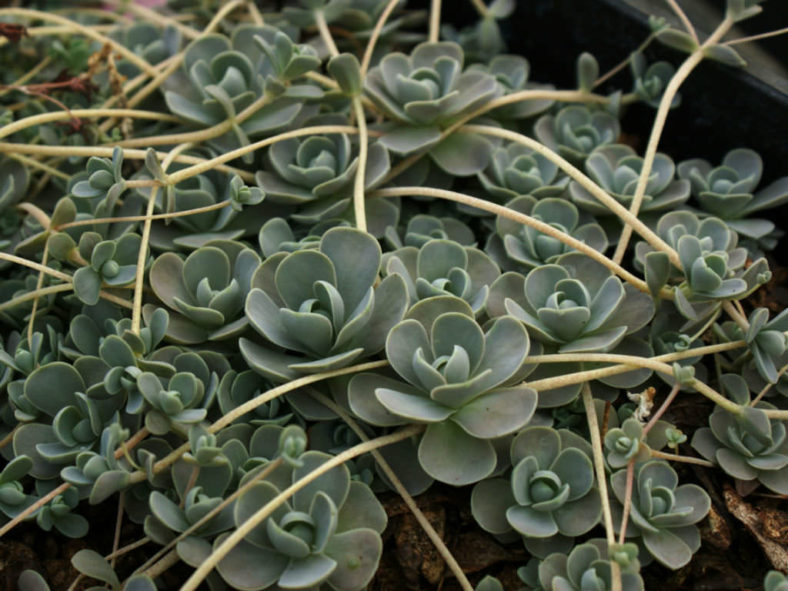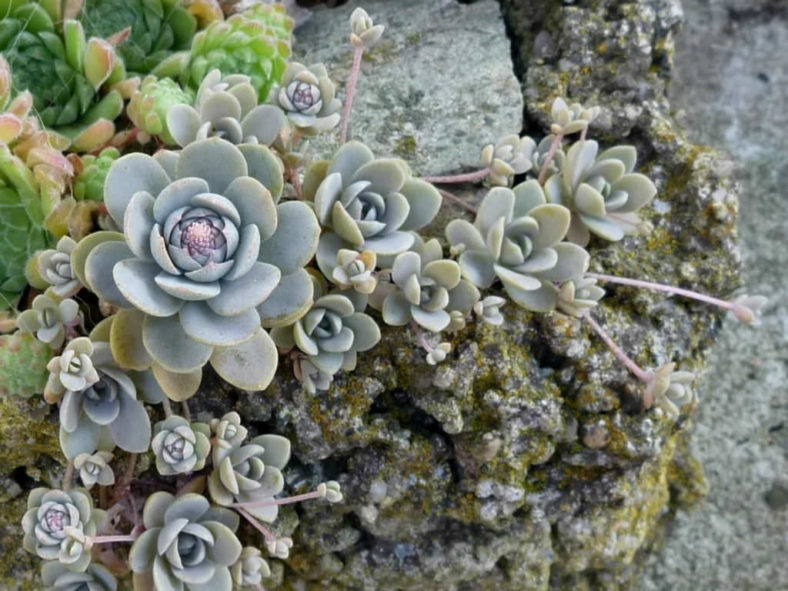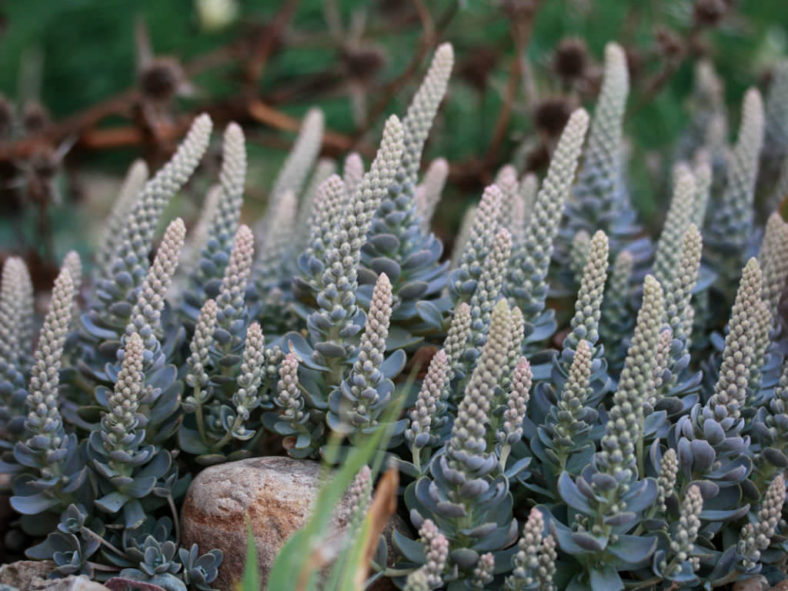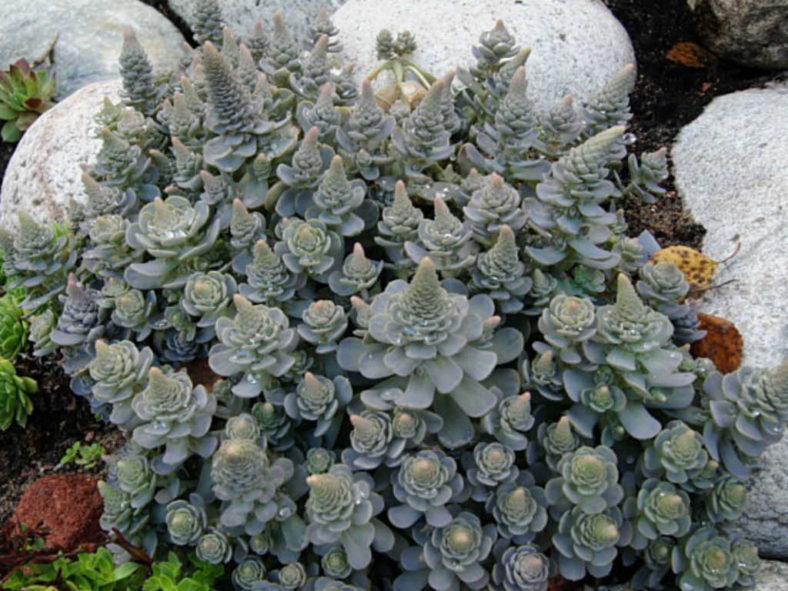Scientific Name
Orostachys boehmeri (Makino) Hara
Common Name(s)
Dunce's Cap, Chinese Dunce Cap
Synonym(s)
Orostachys iwarenge var. boehmeri
Scientific Classification
Family: Crassulaceae
Subfamily: Sedoideae
Tribe: Sedeae
Subtribe: Umbilicinae
Genus: Orostachys
Origin
Orostachys boehmeri is native to Japan.
Description
Orostachys boehmeri is an attractive succulent that forms small rosettes of gray-green to lavender-gray leaves, each producing numerous stolons with a plantlet at the tips. The rosettes grow up to 2 inches (5 cm) in diameter. Stolons are smooth and up to 2.8 inches (6 cm) long. Leaves are spoon-shaped, up to 1.4 inches (3.5 cm) long, and up to 0.6 inches (1.5 cm) wide.
The mature rosettes produce small white flowers with red anthers densely arranged on up to 6 inches (15 cm) inflorescence in fall. The rosettes die after flowering but are quickly replaced by offsetting ones.

Hardiness
USDA hardiness zone 6a to 10b: from −10 °F (−23.3 °C) to 40 °F (+4.4 °C).
How to Grow and Care
As with most similar genera of the Crassulaceae family, this plant can survive in fairly poor soil so long as it is well-draining. The plants of this genera are very cold-hardy and can survive temperatures to -30 °F (-34 °C). Allow soil to dry to the touch between waterings and avoid getting water on the rosettes. Orostachys actively in spring and summer. It requires some bright light and does not tolerate high humidity well.
Orostachys self-propagates through offshoots, and one plant will form a dense mat of many at a given time. Propagation is primarily through offset separation.
To separate an offset, remove soil from the offset's base to find the stolon (a thick root that attaches the pup to the mother plant). It is best to use an offset that has already established some roots of its own. Cut the stolon close to the pup (to discourage roots from growing from the stolon). Place the offset into a small pot with well-draining, sandy soil. Do not water until new growth is noted.
Learn more at How to Grow and Care for Orostachys.
Links
- Back to genus Orostachys
- Succupedia: Browse succulents by Scientific Name, Common Name, Genus, Family, USDA Hardiness Zone, Origin, or cacti by Genus
Photo Gallery
Click on a photo to see a larger version.


